RansomWare Protection
It’s 3AM and a group of computer hackers are working away to paralyze corporate, small business, healthcare, educational and small business networks. They are hoping to earn a quick $1,000 payout on your dime. After all, more than 50% of businesses have been affected by RansomWare with over $209,000,000 paid to hackers in just three months!
What is RansomWare and How Does it Work?
RansomWare is a malicious software package designed to block access to a computer system until a sum of money is paid. It is typically presented to the infected user/computer through a malicious e-mail or web link. After clicking the malicious link, the software package is downloaded and executed on the computer. The software then locks access to all files/folders on the computer and files accessible on the server through an advanced encryption algorithm. After infection, the only way to retrieve your files/folders is through a local or cloud backup. Without a backup, you will lose access to all of your files/folders.
RansomWare locks Microsoft Word, Excel, PowerPoint, OneNote, Project, Outlook, Adobe Illustrator, PhotoShop, LightRoom, QuickBooks, Sage and others. RansomWare also locks common files such as PDFs, JPEG pictures, PNG pictures, GIF pictures, Web Links, Contacts, Calendar Files and more.
What Does the Average Attack Cost?

The costs associated with a RansomWare infection can be drastic. The average cost in lost productivity plus break/fix support is over $750/device. Think of RansomWare protection as a form of insurance. You wouldn’t run your business without liability insurance, so why run your business without comprehensive RansomWare protection?
In a 10 computer network this could take multiple days to get your systems back in operation. With a 20+ computer network you’re looking at the potential for multiple weeks of downtime if the infection spreads to all machines in the network. Each computer needs to be erased, Windows needs to be re-installed, software re-loaded, files restored from secure backups and end user verification. This can take hours just for a single computer.
How Can RansomWare Be Prevented?

In the order that RansomWare travels through your network, the following lines of defense should be implemented to prevent attacks:
- Spam E-Mail Filter (Helps to Block Malicious E-Mail Servers)
- Managed Secure Firewall (Blocks Known Malicious Servers)
- Website Content Filtering (Blocks Known Malicious Web Links)
- Managed Workstation Firewall (Helps to Prevent Cross-Spreading)
- Managed Anti-Virus (Blocks Known Viruses & Trojans)
- Managed Anti-Malware (Prevents Malware From Running)
The following pro-active services are also necessary to prevent attacks to your network:
- End-User Education (Educating Users on Valid vs Malicious E-Mails)
- Windows Patching/Updates (Patches Known Flaws & Exploits in Windows Operating System)
- Disaster Recovery Plan (Recover Your Files/Software/Systems After an Attack)
